All of our Northwoods Rewilding Network land partners commit to the following nine principles of rewilding, to ensure that by working collaboratively the network delivers maximum impact for nature, climate and people.
The Northwoods Nine booklet explains these principles in detail and can be used to guide any land manager to begin their rewilding journey.
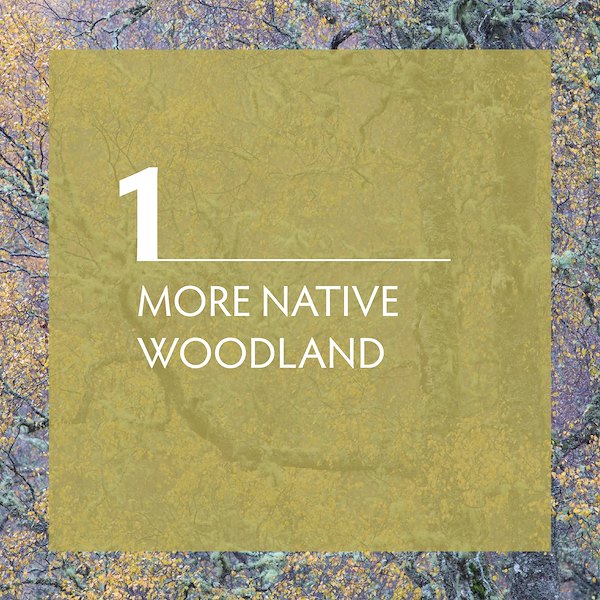
Establishing new native woodland and enriching existing woodland
Six thousand years ago, woodlands stretched across much of Scotland. Large herbivores like aurochs helped create a patchwork of clearings within the forested landscape, with marshes and grassy floodplains set among tracts of mature trees.
Today, Scotland is one of the least wooded countries in Europe.
Native woodlands sustain the most biodiversity, play a vital role in enriching soils and create shade along watercourses. The best way to establish more native woodland is through natural regeneration – letting nature lead the way. Doing so creates more diverse woodlands, which support more complex species interactions. Regeneration also avoids the carbon footprint associated with growing, transporting and protecting tree saplings.
There will of course be places where natural regeneration isn’t possible. In these circumstances, it is vital to plant the right tree in the right place, avoiding straight lines, deep peat or species-rich grasslands. The goal should be to establish a mosaic of different habitats, mimicking the diversity of natural woodlands.
Creating or restoring peatlands, ponds and wetlands
Scotland’s wetlands include marshes, reed beds, bogs and ponds. All of these habitats are permanently – or at least frequently – waterlogged, and each supports its own community of wildlife.
Wetlands provide us with clean water, help to moderate floods, maintain river flows during droughts, limit the spread of wildfires and store large amounts of carbon. And yet, despite their vital importance, the world’s wetlands are being lost three times faster than our forests.
Vast areas of peatland across Scotland are now being ‘re-wetted’ after centuries of being drained. The carbon that healthy peatlands lock away is significant – the blanket bogs in the Flow Country alone contain more than three times the carbon found in all of Britain’s woodlands combined.
At a smaller scale, ponds serve as vital stepping stones for many water-dependent species and can be created alongside ‘scrapes’ – shallow depressions with gently sloping edges that seasonally hold water. These scrapes are attractive to a wide variety of invertebrates and provide feeding areas for wading birds.

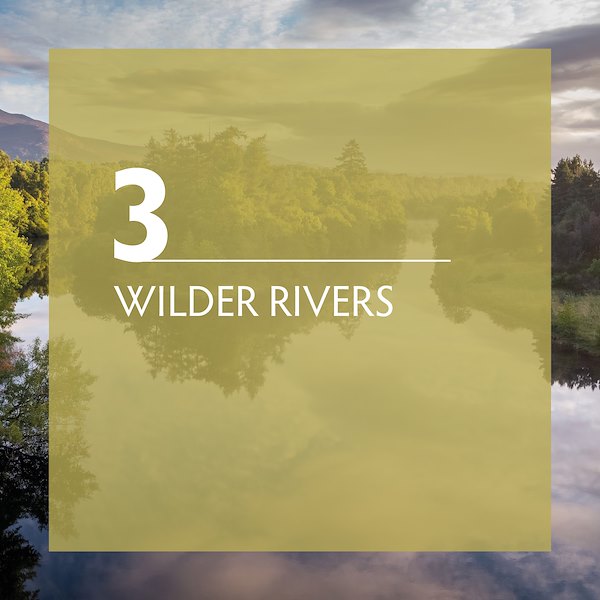
Restoring natural processes along watercourses and across flood plains
Numbers of wild Atlantic salmon in Scotland have decreased by around 40% since the 1980s. One factor is rising water temperatures – young salmon cannot feed above 23°C. In the hot summer of 2018, around 70% of Scotland’s rivers exceeded this threshold. By 2050, it’s expected that such summers could occur every other year.
Many of Scotland’s rivers flow through de-wooded landscapes, so restoring 'riparian' woodland alongside rivers and watercourses can help by providing vital shade. Falling leaves add nutrients to the water and trailing branches create natural silt traps, leaving gravel beds clear for spawning fish.
Of course, new ‘riverwoods’ take time to establish. In the short-term, placing 'woody debris' like fallen trees into rivers and burns mimics natural processes by sheltering young fish. Similarly, leaky dams constructed in ditches can hold back water, unless and until beavers arrive to do the job naturally. This is classic ecological rewilding – intervening just enough to get nature back to a place where it can begin functioning independently again.
Removing wildlife migration barriers and establishing ecological corridors
Habitat fragmentation can separate populations of wildlife, making them more susceptible to declines and ultimately, extinction. Many woodland species for example, are reluctant to travel far from the safety of their forest homes: red squirrels and crested tits in particular avoid crossing large open spaces. Roads without wildlife crossings can create barriers for hedgehogs, badgers and otters. Dams can block fish migration and high fences interrupt the natural behaviour of deer.
The threats of fragmenation and ecosystem simplification are among the key challenges that rewilding was conceived to address.
Habitat corridors typically link two separate fragments, creating one larger island out of two smaller ones. Hedges of blackthorn and hawthorn can provide pathways through agricultural landscapes, while restoring riparian woodland can maximise a river’s natural function as a wildlife highway. Migratory birds are also reliant on ecological ‘stepping stones’ across the landscape – places where they can rest and feed on long journeys.
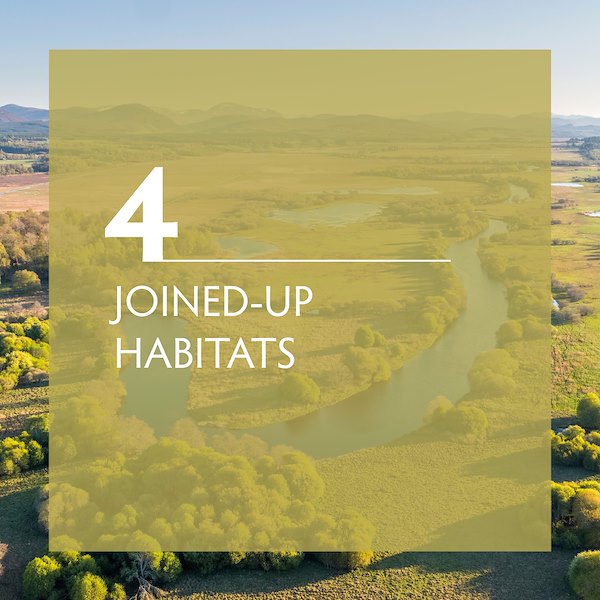
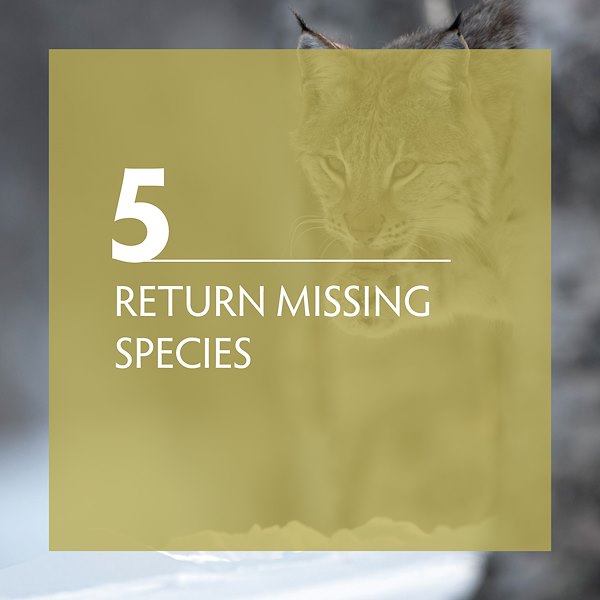
Reintroducing native species and expanding the range of existing species
A survey in 2019 revealed that Scotland ranked 212th out of 240 countries surveyed for their biodiversity intactness – the completeness of their natural heritage.
In a global biodiversity crisis, Scotland has experienced more wildlife loss than most.
Biodiversity is intrinsically linked to the functioning of vital ecosystem services – the processes that supply us with clean air and water, food and shelter. When we lose biodiversity, we diminish our access to these life-support systems.
Nature loss also leaves us impoverished in a more profound sense. People are increasingly disconnected from nature, at a cost to their health and wellbeing. Many of us find ourselves experiencing some form of environmental grief, mourning the loss of stimulation and inspiration provided by interactions with wild nature.
Rewilding seeks to reverse biodiversity losses by reintroducing missing species and expanding the range of diminished wildlife populations. Reintroductions offer the most dramatic transformations to both the ecological functionality and the fundamental feel of a place, adding to both the real and perceived degree of wildness.
Encouraging processes such as vegetation succession and predator-prey interactions
A key principle of rewilding is to restore autonomy to natural systems, freeing them – as much as possible – from human control. This is one way in which rewilding differs from other conservation approaches that are typically predicated on maintaining an environment in an existing state. Rather than having a defined end point in mind, rewilding is more content to let an ecosystem evolve, exhibiting its natural dynamism.
One advantage of self-willed ecosystems is that they work in the way they want to work, adapting to shifting climatic and environmental pressures. They are thus more resistant to the shocks and disturbances that threaten more intensively managed conservation landscapes.
Relinquishing control can be a challenging psychological shift. We have become conditioned to tidy, orderly landscapes. By contrast, letting nature lead allows us to enjoy more surprises – rewilding restores the X factor of wildness that we respond to so powerfully on an emotional level.
Taking a step back is one of the easiest rewilding actions we can take.
DOWNLOAD THE NORTHWOODS NINE BOOKLET
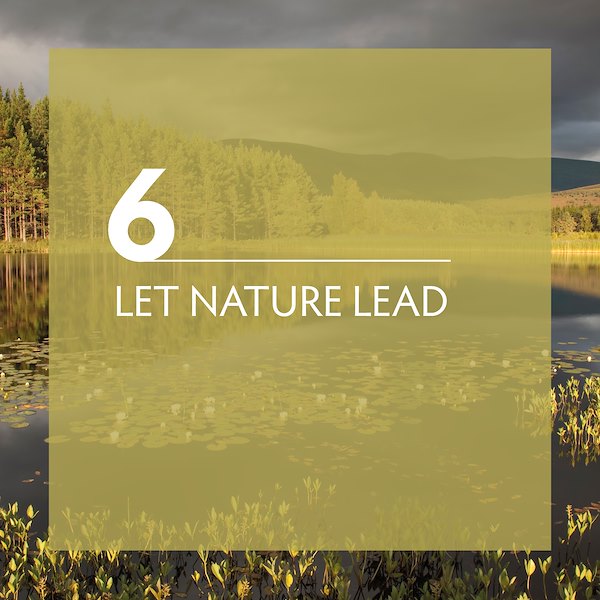
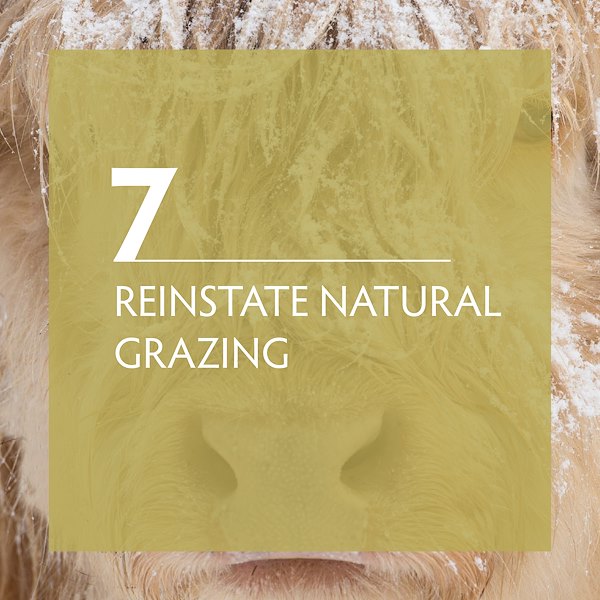
Using appropriate grazers such as cattle, to replicate the impact of missing herbivores
In Scotland, the disappearance of large wild herbivores like tarpan and aurochs meant that natural grasslands were gradually replaced by pastures and meadows, which were then grazed by domestic livestock for millennia, until the arrival of industrial machinery, herbicides and fertilisers.
Today, across the UK, there are growing herds of ‘natural’ herbivores, such as Highland cattle or Exmoor ponies. These substitutes for extinct grazers receive no supplementary feeding, give birth unassisted and exhibit natural behaviours within breeding groups – effectively living ‘wild’ lives.
The use of such grazers is distinct from farming. Although some animals enter the human food chain, this is not their primary purpose. Natural grazing also differs from conservation grazing, as the goal isn’t to create a certain habitat that favours selected species. Instead, it seeks to restore the dynamic processes provided by the behaviour and interactions of missing herbivores.
Exploring opportunities for recreation, education and employment with local communities
In some areas, there exists the suspicion that rewilding is being imposed on communities, led by outsiders with insufficient understanding of local culture and economics. In Scotland, with the history of the Clearances still widely felt, any suggestion that rewilding is predicated on excluding people and will lead to declines in rural communities, is especially inflammatory.
Happily, a growing number of examples now refute this characterisation, with community involvement an increasingly common feature of rewilding initiatives, including within the Northwoods Rewilding Network.
Some 20% of Northwoods land partners now comprise community landholdings. Beyond Northwoods, the Seawilding project in Argyll exemplifies the spirit of community cohesion and enthusiasm that can be inspired by a popular rewilding vision, while the community owned Tarras Valley Nature Reserve in southern Scotland has plans that include many rewilding principles.
Rather than being about excluding people, rewilding is better imagined as a way to create vibrant natural systems and enrich people’s lives.
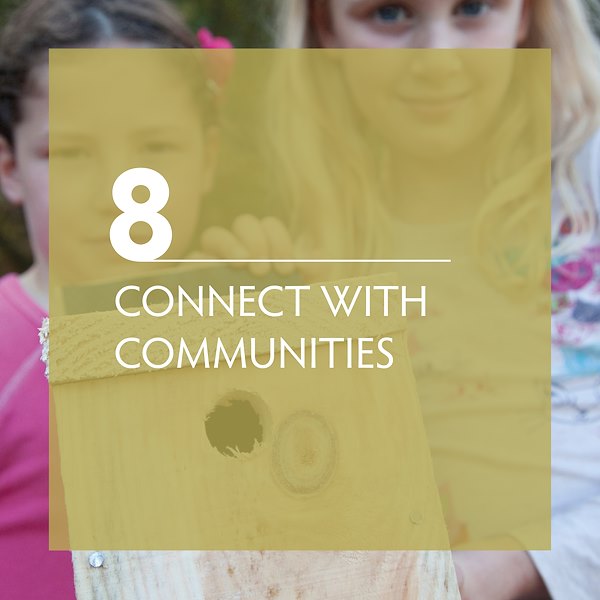

Developing nature-based enterprise models that work in tandem with ecological recovery
One of the founding principles of the Northwoods network is to demonstrate how rewilding offers viable ways to earn a living from nature-rich landscapes. In many places, ecological recovery is only possible when it works in tandem with local economies.
Scotland’s landscapes and wildlife are consistently identified as leading draws for visitors. Across the network, wildlife watching, natural retreats, weddings and events, and a wide range of adventure activities are all complemented by landscapes on a rewilding journey.
But while nature-based tourism can play a significant economic role, business opportunities associated with rewilding are more varied. Regenerative farming, payments for ecosystem services, silviculture, crafts, education and the harvesting of natural food and health products, are all part of the diverse business models that support Northwoods land partners. These enterprises are often deeply integrated with their local communities.


